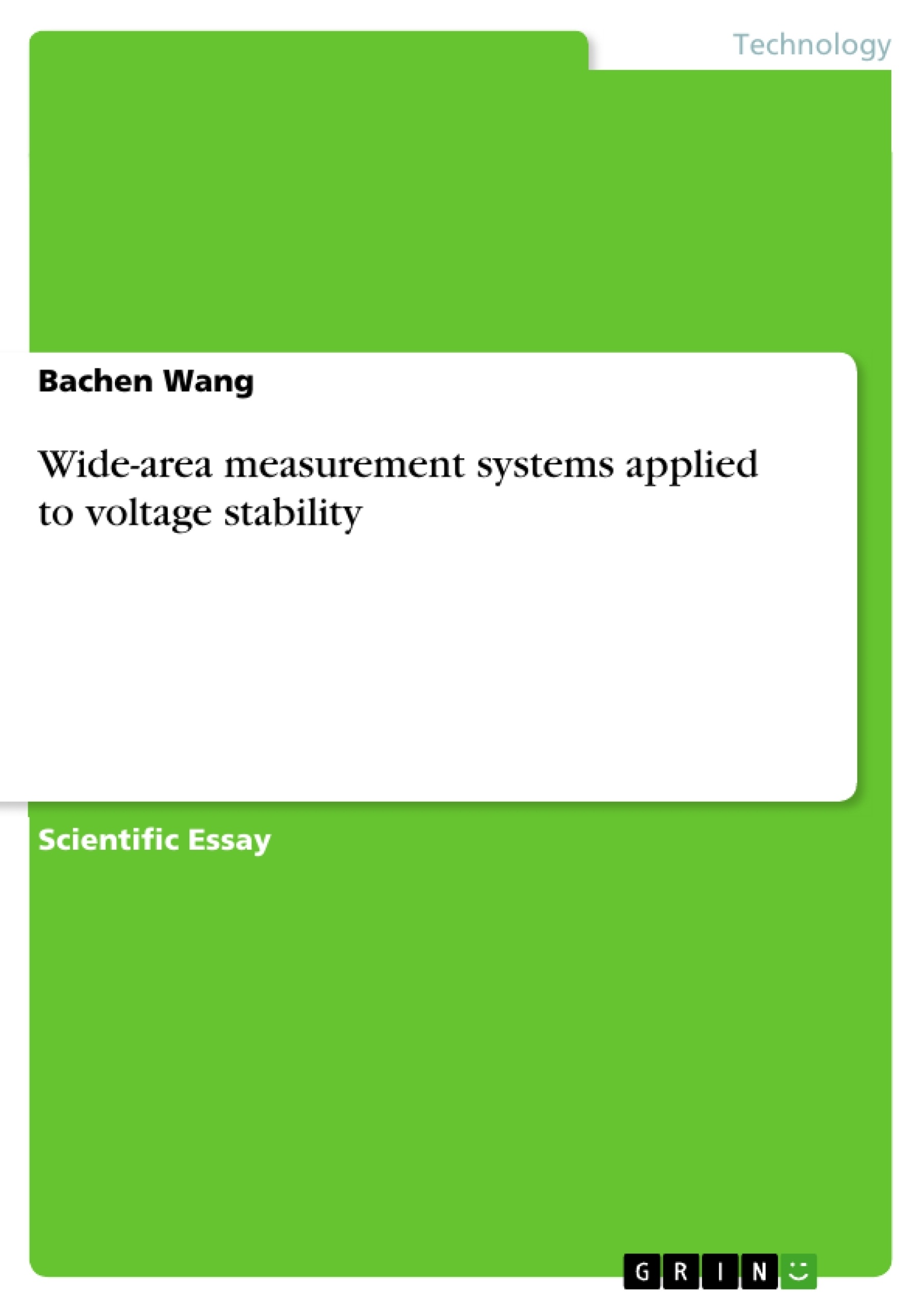In this paper, voltage stability index and the theories on voltage stability as well as WAMS` functions are proposed. The use of WAMS can help system to make quick measures to keep the voltage stability.
Wide-area measurement systems (WAMS) is a system to measure the parameters of the power system and deal with abnormal cases. Transient voltage stability is the ability that the system keeps the voltage normal after fault, which is very important to the power system.
Inhaltsverzeichnis (Table of Contents)
- Abstract
- Introduction
- Structure, Principle & basic goals of WAMS
- Structure
- Principle
- Basic functions
- Voltage Stability
- WAMS to transient voltage stability
- Voltage stability index
- Simple index
- Stability region
- Dynamics safety area
- Research on voltage stability region
- Voltage stability margin
- Transient detection with WAMS
- Summary
Zielsetzung und Themenschwerpunkte (Objectives and Key Themes)
This paper explores the use of Wide Area Measurement Systems (WAMS) in analyzing and controlling voltage stability in power systems. It aims to provide a comprehensive understanding of the concepts and principles behind WAMS and its role in addressing transient voltage stability issues.
- The principles and functions of Wide Area Measurement Systems (WAMS)
- The importance of voltage stability in power systems
- The use of WAMS for transient voltage stability detection and analysis
- Methods for determining voltage stability margins and safety regions
- The application of WAMS in real-time monitoring and control of power system stability
Zusammenfassung der Kapitel (Chapter Summaries)
- The abstract provides a brief overview of the paper, highlighting the use of WAMS for voltage stability monitoring and the proposed voltage stability index.
- The introduction sets the context by discussing the growing importance of WAMS in power systems due to the need for wider area synchronization and time-keeping capabilities. It outlines the key components of WAMS, including Phase Measurement Units (PMUs) and the data center.
- Chapter 2 delves into the structure, principle, and basic goals of WAMS. It explains the system's components, data acquisition and processing, and its primary functions in power system monitoring and control.
- Chapter 3 defines voltage dips and discusses their impact on wind turbine operations, highlighting the need for effective voltage stability measures to prevent cascading voltage failures.
- Chapter 4 explores how WAMS can be utilized to analyze transient voltage stability in power systems. It focuses on the collection and processing of transient data and how WAMS can contribute to quick and reliable assessments of voltage stability under fault conditions.
- Chapter 5 presents different indices and approaches for evaluating voltage stability. It discusses various methods for determining voltage stability margins and safety regions, including the use of Jacobian matrices and energy functions.
- Chapter 6 examines the use of WAMS for detecting transient voltage stability in real-time. It outlines a step-by-step scheme for detecting transient voltage stability based on real-time WAMS data.
Schlüsselwörter (Keywords)
This paper focuses on wide area measurement systems (WAMS), voltage stability, transient stability, power system analysis, and real-time monitoring and control. It explores the application of WAMS for transient voltage stability detection and analysis, including the development of voltage stability indices and the determination of stability regions and margins.
- Citar trabajo
- Bachen Wang (Autor), 2016, Wide-area measurement systems applied to voltage stability, Múnich, GRIN Verlag, https://www.grin.com/document/318654



